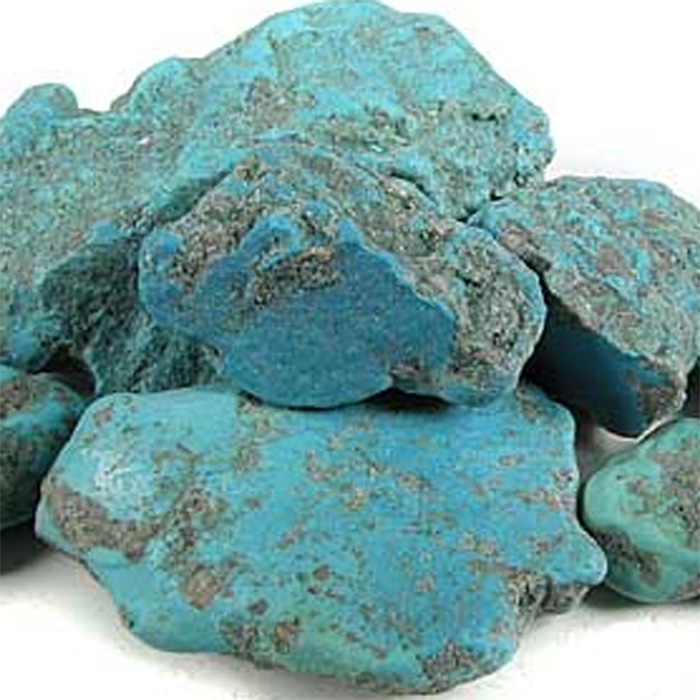Group: Phosphates
Chemical composition: CuAl6(PO4)4(OH)8.4H2O
Colors: sky blue to green, depending on the amount of iron and copper it contains
Hardness: 5 to 6
Formation: Triclinic crystal; Massive form
Principal Sources: Iran, Tibet, northern Africa, Austraalia, Siberia, England, Belgium, France, Poland, Ethioopia, Mexico, Chile, China, Arizona.
Special Notes: Turquoise was one of the first gemstones to be mined; dating from 5000 BC (Mesopotamia). It is rare and valuable in finer grades and has been prized as a gem and ornamental stone for thousands of years owing to its unique hue. The Egyptian use of turquoise stretches back as far as the First Dynasty and possibly earlier; however, probably the most well-known pieces incorporating the gem are those recovered from Tutankhamun’s tomb, most notably the Pharaoh’s iconic burial mask which was liberally inlaid with the stone. In the American southwest turquoise is almost invariably associated with the weathering products of copper sulfide deposits in or around potassium feldspar bearing porphyritic intrusives.

